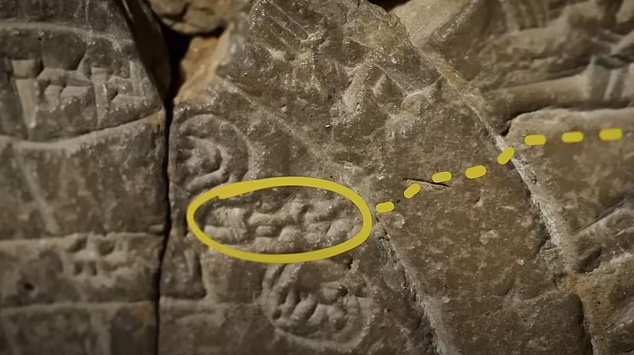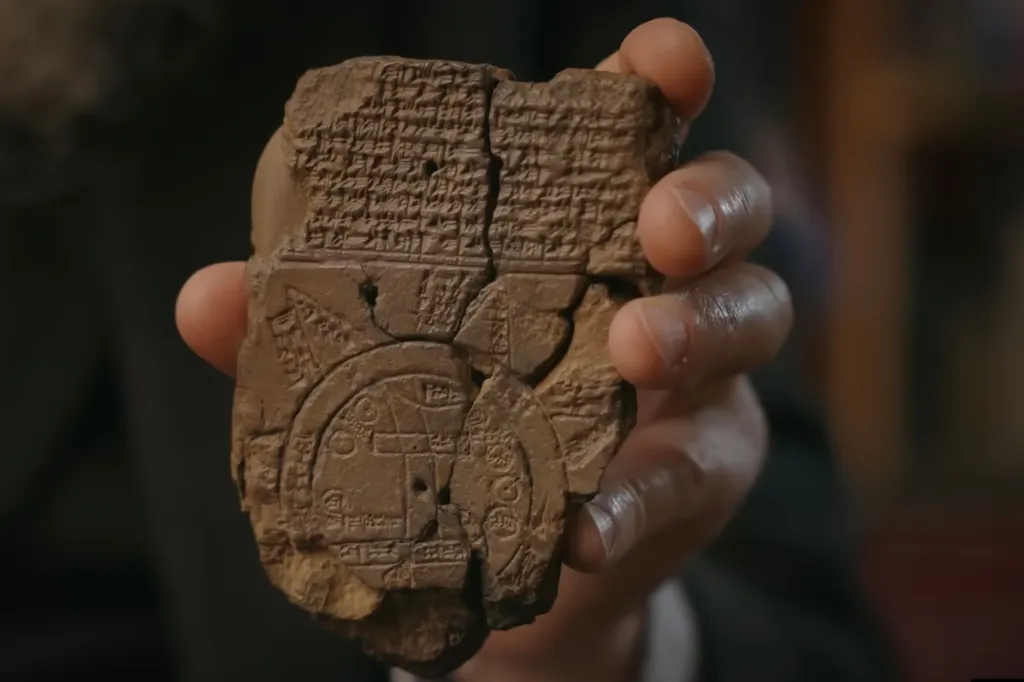The world’s oldest map, etched into a 3,000-year-old Babylonian clay tablet known as the Imago Mundi, has sparked excitement among historians and researchers. Recent translations of this ancient artifact suggest it may contain references to the legendary resting place of ‘Noah’s Ark.’
Stored at the British Museum, the Imago Mundi’s intricate diagram uses wedge-shaped symbols to illustrate a story of creation, navigation, and a catastrophic flood eerily similar to the Biblical tale. With a new translation revealing detailed directions, researchers have a clearer idea of where this ancient civilization believed the famed Ark was located.
Read more: What Is Okra Water and Is It Actually Good for You?

Ancient Instructions Leading to Urartu
One of the most astonishing details comes from the back of the tablet. Here, a set of instructions offers a pathway that seems to lead explorers toward “Urartu”—a place which translates to the Assyrian term for Ararat, the mountain where Noah’s Ark supposedly landed. According to Dr. Irving Finkel, British Museum curator, travelers following the map’s instructions would “eventually come upon a giant vessel,” referencing the structure that some ancient accounts say preserved humanity from a great flood.
Dr. Finkel explains, “This story was not just a fable to the Babylonians—it was, in their view, factual. If you undertook the journey described, you would theoretically see the remnants of this historic boat.”
Discovery of the Imago Mundi and Mysteries Within
The Imago Mundi tablet has fascinated scholars since its discovery in 1882 by archaeologist Hormuzd Rassam in Sippar, Iraq. This artifact, composed in cuneiform, includes astronomical events, forecasts, and, intriguingly, a map representing what Babylonians saw as their entire known world. In the tablet’s design, Mesopotamia sits at the map’s center, encircled by a “bitter river” symbolizing the world’s edge. Eight triangular markers—interpreted by scholars as mountains—appear in alignment with descriptions found on the tablet’s reverse side.
In a YouTube discussion, Dr. Finkel dives into the symbolic nuances of these markings, noting, “‘Number four says ‘To the fourth, to which you must travel seven leagues.’” For researchers, this statement held particular intrigue, as it mirrored descriptions from other Babylonian tablets discussing a “parsiktu” or a “thick, boat-like vessel.”

Babylonian Version of the Great Flood
The Babylonian Flood story, preserved on clay tablets, parallels the Biblical account with key variations. According to Babylonian texts, the god Ea commanded a man named Utnapishtim to construct an ark and preserve life against an impending, divinely sent flood. Dr. Finkel notes that this “Babylonian Noah” adhered precisely to Ea’s instructions, constructing a boat “as thick as a parsiktu-vessel.”
While this tale dates back around 3,000 years, the Biblical account of the flood reaches as far as 5,000 years. Yet, similarities are striking enough to lead many scholars to believe these narratives emerged from the same mythological tradition, adapted over generations.

Controversies and Modern Discoveries on Mount Ararat
The claim that Noah’s Ark rests on Mount Ararat in Turkey has long been contentious. Some scientists argue the mountain’s topography is a natural formation, while others cite divine intervention as the explanation for its unique shape. Excavations led by Istanbul Technical University revealed marine fossils, clay artifacts, and materials suggesting human activity in the area between 3,000 and 5,000 years ago.
Dr. Andrew Snelling, however, a young Earth creationist, casts doubt on this theory, asserting that Mount Ararat itself may have formed after the flood. The Bible describes the Ark’s measurements as “300 cubits long, 50 cubits wide, and 30 cubits high,” which translates to approximately 515 feet by 86 feet by 52 feet. Yet, despite centuries of debate, no universally accepted evidence has emerged to confirm the Ark’s existence.
Takeaway
For centuries, scholars and adventurers alike have been captivated by the story of Noah’s Ark and its mysterious final resting place. The Imago Mundi offers a rare glimpse into the minds of ancient Babylonians and their view of the world. For those who venture on this mythical journey through Urartu, Dr. Finkel says, it would lead to a glimpse of “wooden ribs” of a vessel on the mountain—an experience reminiscent of the Biblical account.
Though the reality of Noah’s Ark remains unconfirmed, this ancient artifact encourages modern-day seekers to continue the quest for answers in ancient wisdom. What mysteries lie buried in the earth, waiting to tell their stories? The Imago Mundi has stirred curiosity anew, bridging the ancient and the modern in humanity’s unending search for truth.

